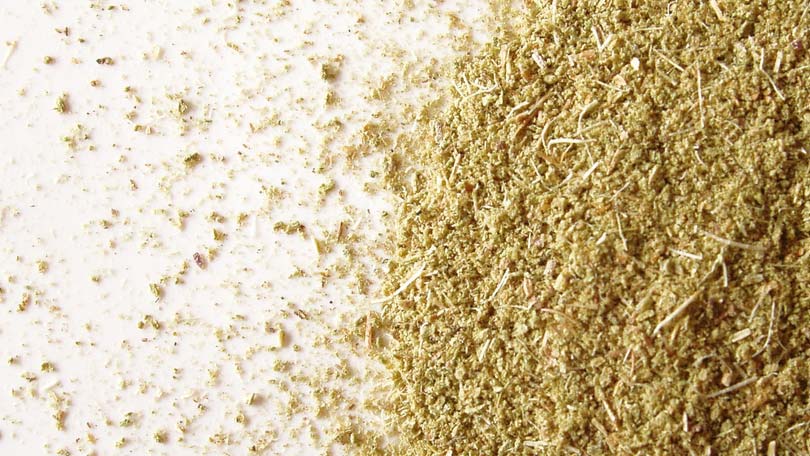Savory, a part of the genus Satureja and member of the mint family, is historically one of the most important herbs in European cookery and can still be found in spice racks today. Indigenous to Southern Europe and parts of the Mediterranean, savory was one of the only herbs available to European chefs for the hundreds of years before exploration and spice trading opened up the region to new and exotic seasonings. First mentioned in classical Greek literature and used as a culinary and medicinal herb by the Ancient Romans, savory was also one of the first herbs brought to the New World from Europe and therefore has relevance in the history of American cooking as well.
Characteristics
There are two main varieties of savory which are relevant to the modern kitchen – summer savory (Satureja hortensis) and winter savory (satureja Montana). Summer savory is an annual herb with long, narrow, dark green leaves and a potently aromatic fragrance. Winter savory is a woody, shrub-like perennial evergreen with compact stems and branches. It has a heavier, darker aroma which is more penetrating than summer savory. Both varieties are native to Europe and the Mediterranean, and are “low-growing” plants, reaching no more than a few feet in height. They bear white or pale pink flowers and are used frequently in landscaping and aesthetic gardening.
Savory is known for its highly aromatic leaves and piney, peppery flavor.
Common Uses
As mentioned above, savory was one of the few herbs readily available in the isolated European regions before the point where world exploration began to bring in spices and herbs from other places. It was important in medieval cookery and helps to define the flavors of that time period’s cuisine. Its use did decline with the arrival of herbs from the new world, but savory has endured enough that it is still utilized frequently today. Savory has a milder quality than other herbs and is useful in seasoning delicate and/or somewhat bland items that could easily be overpowered by more potent ingredients such as oregano. This quality also makes it appealing for herb blending, and is a staple ingredient in bouquet garnis and other blends. The herb works very well with meat, poultry, eggs and cheese, and brings out flavors in sautéed greens. Savory is known for seasoning grain and bean dishes like lentils, peas, bulgur, rice, pilafs, and grain-based casseroles, and so savory is sometimes referred to as “the bean herb.” It also works in soups, braises, and stews such as fricot, and can be chopped and added to salads or used similarly to parsley as a garnish. Winter savory, with its sharper flavor, is also preferable in marinades and pickles.
Savory, particularly the summer variety, has played roles in natural and herbal medicine in the past. It was said to be a reliable antiseptic and also could be used to treat digestive ailments; like many herbs, it was also said to have aphrodisiac qualities. The leaves and branches of the plant could also be burned to scent and/or disinfect spaces after times of illness. The herb also contains oils like terpinene, thymol and carvacrol, making it a good addition to mouthwashes or natural toothpastes. The herb additionally was appealing to bees and recommended to beekeepers to attract the insects to their hives.
Use and Storage
Summer savory and winter savory can be bought fresh at most farmer’s markets or specialty grocers. The fresh leaves dry well and can be saved for later use. Savory can also be infused into vinegar or oils for cooking. Dried savory should be stored in an airtight container out of direct sunlight.
Use It:
- in herb blends like the French herbs de Provence
- dried and sprinkled on pizza, garlic breads, or breadsticks
- to season green vegetables
- chopped and added to salads
- used in place of parsley as a garnish
- infused into oil or vinegar for cooking
- in soups, stews, and marinades
- to season any bean, lentil, or rice dish
- in sauces and dips
- paired with most meats
Recipe using Savory
Roasted Garlic and Herb Baked Potatoes
6 baking potatoes
¼ cup extra virgin olive oil
1-2 tablespoons fresh chopped savory
½ teaspoon dried sage
1 bulb garlic, roasted (see GARLIC for recipe), insides scooped and out and set aside
1 teaspoon parsley, chopped
Salt and pepper to taste
Wash potatoes. Rub outside with a bit of olive or canola oil. Wrap in tinfoil and bake in an oven at 375 degrees for 45 minutes.
While potatoes are baking: in a small saucepan heat oil over medium-low heat. Add sage and cook until fragrant. Add savory and stir, cooking another 1-2 minutes. Remove from heat. Let cool and pour oil into a small bowl. Add roasted garlic and stir to combine.
Carefully remove potatoes. Split down the middle. Spoon garlic and herb mixture into the center of the potato. Sprinkle with salt and pepper. Serve immediately.






